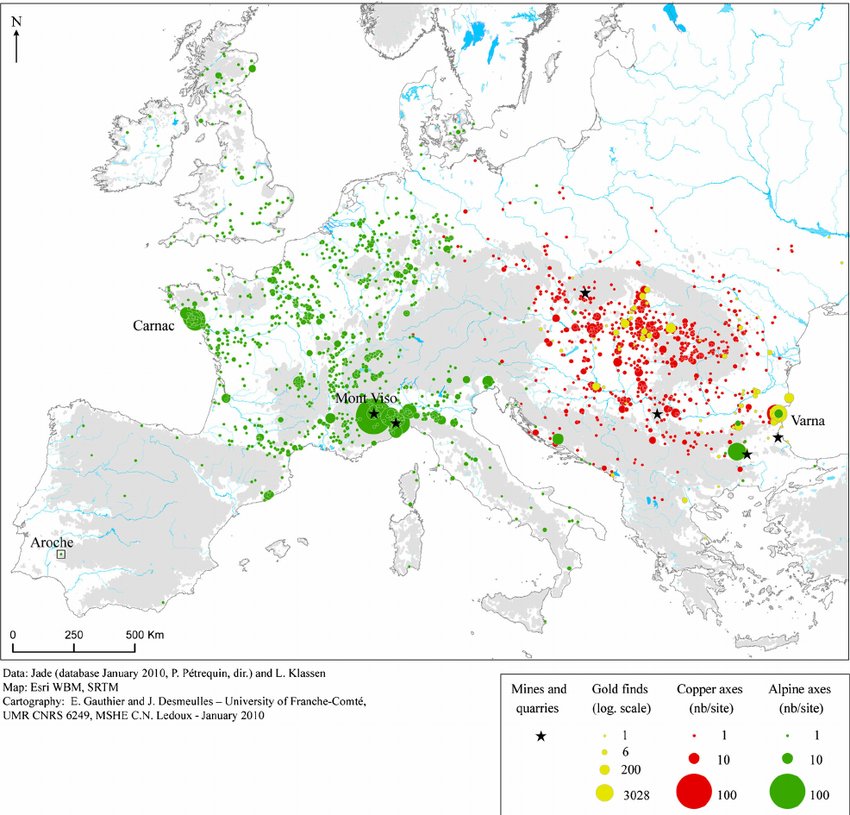on Sardegna, there is the megalithic Arzachena culture in the north
I suppose you don't consider the Domus de Jana burial chambers as megalithic then, and Nuraghi were built after 2000 BC
there are cultures like Chasséen and Michelsberg which are quite similar to megalithic culture
they don't have actual megalithic structures, but they have earthworks like the British neolithic and they have jadeite axes which were also collected in megalithic societies
they also had flint mines like in megalithic societies
the jadeite axe trade was inititiated by I2a1b1-L161 which is predominant in the 7000 years genetic history of France and in megalithic Scandinavia
I2a1b1-L161 also pops up in TRB Esperstedt, Salzland
Salzland was interesting for salt deposits, a well-known trading commodity
salt was traded for jadeite axes, Michelsberg people probably had their own trading communities in Salzland, but they were driven out around 5,3 ka when Salzmünde was burned down by Scandinavian megalithic farmers allied with incoming globular amphora herders
here is a very intersting video :
about Scandinavian megalithic societies infiltrating and dominating TRB farmers :
https://adnaera.com/2018/09/09/a-first-and-intriguing-glimpse-at-trb-west-group-adna/
The expansion is best documented for Central Germany, with the consecutive Tiefstich phases of Altmark Group (ca. 3500-3350 BC), Walternienburg (ca. 3350-3100 BC), and Bernburg (ca. 3100-2650 BC, possibly commencing somewhat earlier). While the initial spread concerned HG territory, Walternienburg marks the first expansion into a traditional EEF settlement area, around the Elbe-Saale confluence. The city of Bernburg is already deep in EEF territory, and by around 3100 BC, the Tiefstich sphere reached from Stettin in the NW to the south-eastern foothills of the Harz. This expansion is believed to have caused the transformation of the Baalberge Culture aka early TRB S into Salzmünde (late TRB S) [Ironically, the village of Baalberge has a few years ago been incorporated into neighbouring Bernburg]. The eponymous Salzmünde enclosure was around 3100 BC burnt down and destroyed by a GAC – Bernburg coalition, Afterwards, in the nearby Halle-Dölauer Heide enclosure, Bernburg people supplanted their stone cists over and across a Salzmünde graveyard, in obvious disregard of the latter.
the flint mines in Spiennes, Belgium had a nearby fortified Michelberg settlement
when you study all this you'll realise the indoeuropeans didn't bring violence to Europe, it was already there
somehow the IE were 'better' warlords, probably sometimes fighting the megalithic clans, but sometimes also making alliances with some of them
it would explain Sonehenge






